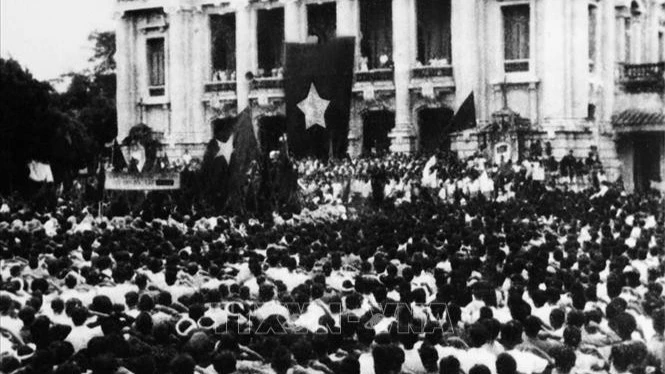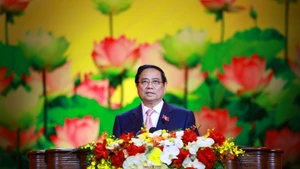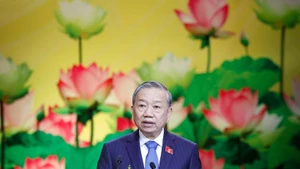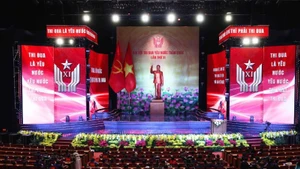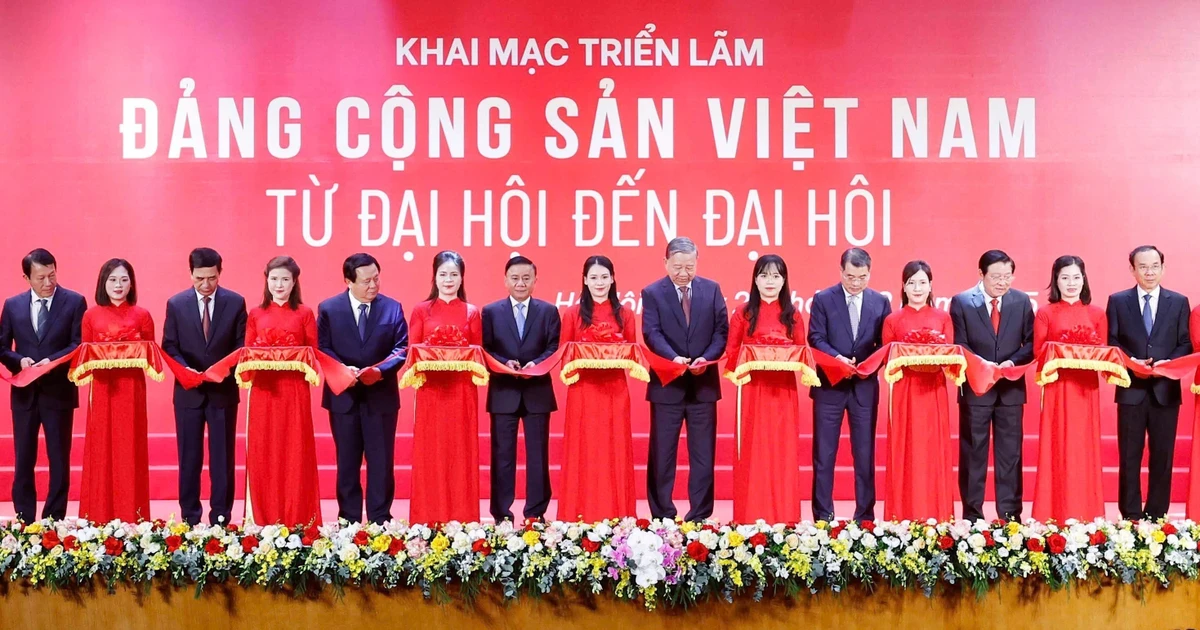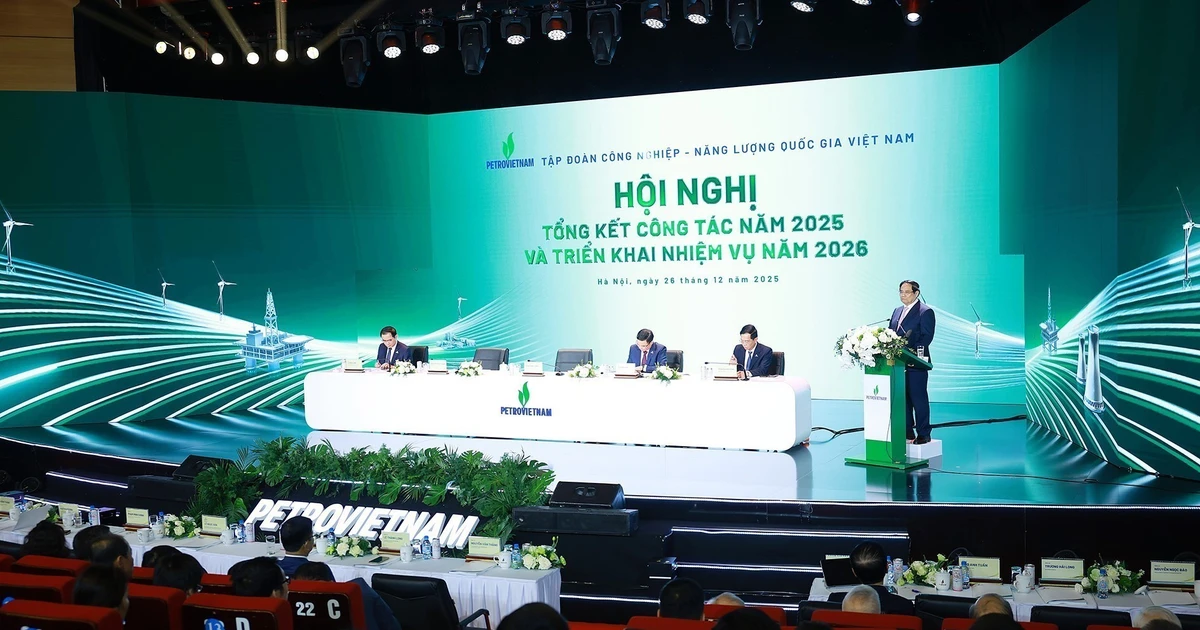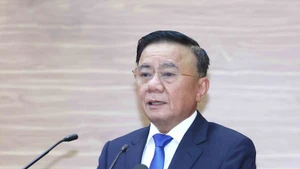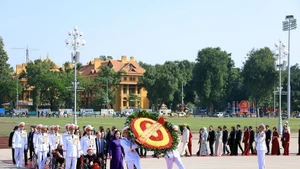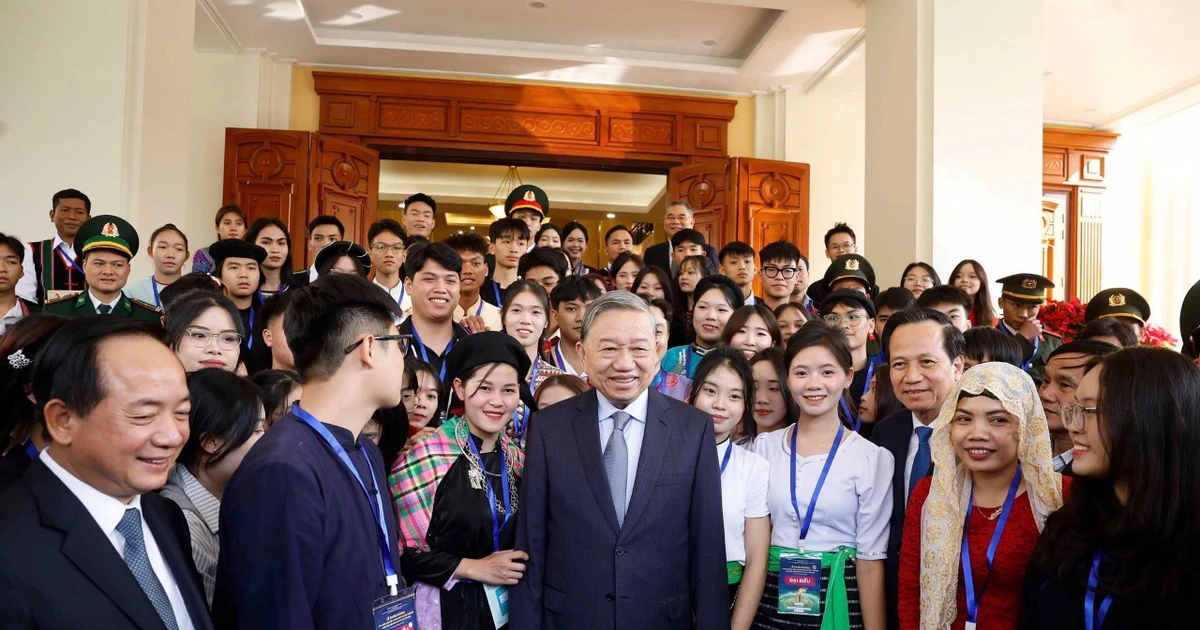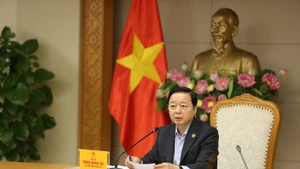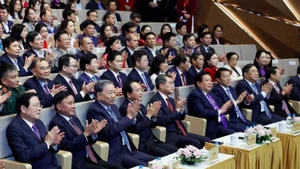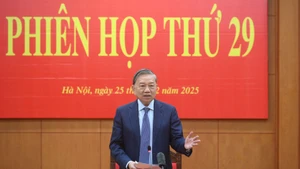Rooted in the foundation of the socialist rule-of-law state, the revolutionary State of Viet Nam—born of the great victory achieved by the Vietnamese people 80 years ago—has been renewed, consolidated, and continuously improved. It continues to carry out its historic mission as a state of the people, by the people, and for the people, both today and in the future.
During his theoretical studies and practical exploration of the revolutionary path for the nation and in promoting the establishment of a proletarian political party in Viet Nam, President Ho Chi Minh laid down a guiding principle: a rule-of-law state must belong to the people. This was both the goal and defining characteristic of the revolution, as well as the guarantee of its ultimate success. Guided by this vision, during the struggle for national independence, the Party remained steadfast in its objective while developing a theoretical understanding of revolutionary state power.
During the movement for the August Revolution in 1945, one of the Party’s crucial advances in both thinking and leadership strategy—contributing to the success of the national salvation movement—was the decision to establish a “democratic republic government” after defeating French colonialists and Japanese fascists. This was envisioned not as the government of any single class, but as a government representing the entire nation, excluding only collaborators with the French and Japanese and national traitors. It was to be “the people’s government of the Democratic Republic of Viet Nam (…) elected by the National Congress,” and “a genuine representative of the unity and unanimous action of the entire people.”
Under the leadership of the Party and the Viet Minh Front, proto-governmental institutions began to take shape across the country, organised by patriotic associations and people’s committees to safeguard the rights and interests of the people.
This marked the process in which the people directly exercised their democratic rights and responsibilities, gradually advancing toward representative democracy.
After the Party launched the general uprising, at the National Congress in Tan Trao (Tuyen Quang), delegates elected the Viet Nam National Liberation Committee—effectively the Provisional Government—charged with leading the struggle for national liberation, representing the people in international relations, and overseeing all domestic affairs.
With the success of the general uprising, on September 2, 1945, President Ho Chi Minh, on behalf of the Provisional Government, solemnly proclaimed the Declaration of Independence, announcing to the nation and the world the birth of the Democratic Republic of Viet Nam—the first people’s democratic state in Southeast Asia, led by the Communist Party.
Over the past 80 years, state authorities at all levels have continuously been nurtured, strengthened, and built up by the Party and the people, fulfilling the historic mission entrusted to them since their inception with excellence.
Building a government of the people, by the people, and for the people has remained a central political-ideological orientation and a fundamental task that runs through all Party platforms, strategies, and policies. Throughout the different stages of the revolution, from the period of resistance and nation-building (1945–1954), to socialist construction in the North and the struggle for liberation and reunification (1954–1975), the Party charted paths to strengthen state power to advance the national democratic revolution while safeguarding the basic rights and interests of the people.
Over the past 80 years, state authorities at all levels have continuously been nurtured, strengthened, and built up by the Party and the people, fulfilling the historic mission entrusted to them since their inception with excellence.
Since 1986, with the initiation of the comprehensive Doi Moi (Renewal) process, the Party has deepened its theoretical understanding and strategic policies for building and perfecting the socialist rule-of-law state of Viet Nam. The sixth National Party Congress (1986) called for “a major reform of the state apparatus” and “governing the country by law.” The 1991 Platform for National Construction in the Period of Transition to Socialism Identified the Socialist State – of the people, by the people, and for the people, founded on the alliance of workers, peasants, and intellectuals under Party leadership – as a central element in national construction and defence during the transitional period.
The 2011 supplemented and developed Platform reaffirmed that “building a socialist rule-of-law state of the people, by the people, and for the people” was one of eight fundamental orientations for achieving the goal of turning Viet Nam into a modern industrialised nation with socialist orientation by the mid-21st century.
This principle has been institutionalised, constitutionally enshrined, and translated into organisational structures and operational mechanisms of state governance for the past 80 years.
The first Constitution (1946) established the State as the representative of the people’s sovereignty, accountable to the nation for its destiny. The 1959 Constitution stipulated that “all state organs must rely on the people, maintain close ties with the people, listen to their opinions, and be subject to their oversight.”
This principle has been institutionalised, constitutionally enshrined, and translated into organisational structures and operational mechanisms of state governance for the past 80 years.
In the Doi Moi era, the Constitution and laws have increasingly embodied the principle of the socialist rule-of-law state of the people, by the people, and for the people.
The 2013 Constitution declared: “The Socialist Republic of Viet Nam is a state of the people, by the people, and for the people. All state power belongs to the people.” It further affirmed the State’s duty to respect, protect, and ensure human rights and citizens’ rights, and to pursue the goals of prosperity, democracy, justice, and civilisation – so that all people may live in freedom, happiness, and comprehensive development.
On the basis of the Constitution, Viet Nam has steadily improved its legal system, organised governance on the rule-of-law principle, and ensured that all state organs operate within legal frameworks.
Successive laws on state organisation have provided the legal basis for structural reform and enhanced the efficiency and effectiveness of state institutions - always oriented toward better service to the people.
Public consultation in lawmaking and strict law enforcement have increasingly reflected the living reality of a government of the people, by the people, and for the people—responsive to the demands of national renewal and international integration.
Over the past 80 years, from the Democratic Republic of Viet Nam to today’s socialist rule-of-law state, despite institutional changes and reforms, the underlying principle has remained consistent: “The Party leads, the State manages, the people are the masters.”
Today, state organisation upholds the principle of unified power, while ensuring functional division, coordination, and checks and balances among the legislative, executive, and judicial branches. The state apparatus is shifting from a management-centred mindset to one of governance and facilitation - aimed at development, efficiency, and effectiveness, always serving the people.
In Viet Nam, the implementation of a two-tier local government model since July 1, 2025, has marked a major breakthrough in institutional reform, decentralisation, and delegation of authority, bringing state institutions closer to the people and ensuring more timely service. In parallel, robust progress in administrative reform, e-government, and digital transformation has helped better meet the demands of socio-economic development and improve people’s lives.
Over eight decades, the Vietnamese State has progressively safeguarded and realised human rights and citizens’ rights in ways consistent with national cultural and social conditions while aligned with universal values of humanity. The State has played a pivotal role in building and implementing a multi-layered, comprehensive social security system - powerful evidence of its character as a government of the people, by the people, and for the people.
As the nation enters a new era of development and integration, both opportunities and challenges are immense. This places urgent and weighty responsibilities on the ongoing task of building a socialist rule-of-law state under the leadership of the Communist Party of Viet Nam - a state that continues to embody the will, aspirations, and interests of its people.
